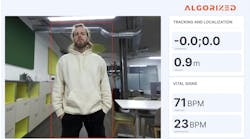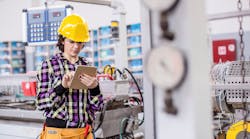Not long ago, hundreds of startups popped up essentially stating they cloned Uber’s business model, but applied it to a different industry. For instance, there’s Wag, the Uber for dog walkers. Meanwhile, Plowz&Mowz is an Uber for snow plowing and yard work, while Shortcut is an Uber for getting a haircut.
While this number of new Uber-inspired startups has fallen, the sheer volume of startups inspired by the ride-hailing giant in recent years reflects the power of using a mobile software platform to making a vexing business transaction more efficient.
Few of these startups, however, focused on the industrial market using IoT-based tools in their products. One exception is Coresystems AG, which has developed field service management software. “Large manufacturers and other types of industrial companies are typically far away from having an Uber-like experience,” said Manuel Grenacher, Coresystems’ CEO. And yet they have more at stake than a person hailing a ride, who faces annoyance for each minute they have to wait for a ride to arrive. Conversely, for a manufacturer, a minute of operational downtime can easily cost thousands of dollars per minute.
“Our goal is to help provide an uptime of close to 100 percent,” Grenacher said.
Here’s how he aims to use field service management software to do that in a nutshell: Let’s say a manufacturing has an IoT-connected injection-molding machine with a mechanical problem. After detecting the problem, the device sends an alert to Coresystems’ software, which then in turns notifies a maintenance technician. Analogous to an Uber driver, the technician can simply accept the work order from a smartphone without the need for a dispatch service. The customer also gets a notification when the technician is arriving. Once the tech arrives to begin working on the machine, Coresystems’ software can provide instructions, reference diagrams or videos for the repair job via a mobile device to help ensure the accuracy of the repair.
[IoT World demonstrates how the next generation of IoT will converge to unlock the intelligence of things in the industrial, enterprise and consumer realms. Get your ticket now.]
At present, the company schedules more than 190,000 service calls every work day.
Coresystems recently announced it is bringing its field service management software to Siemens’ power generation services division, integrating it with the company’s cloud-based MindSphere IoT operating system.
The aim of the partnership is not just bringing ridesharing-esque transactions to Siemens’ power generation services division, but to digitize its global field service execution business. Part of this digital push is building rules into MindSphere. A sample rule could state: “When a pump hits at a defined threshold, trigger a service call. When it hits at a higher threshold, check to see if a replacement pump is available. If not, order a replacement,” Grenacher said.
Another unique element about CoreSystems’ software is the crowdsourcing platform it has developed for field service management. “We help large enterprises to benefit from building a service crowd,” Grenacher said. “You can build a crowd. It can be a variety of people. It can be your own technicians, people in different departments. You can add in people in your partner ecosystems if they are certified. You can incorporate freelancers [into our crowdsourcing platform].” Once the crowd is assembled, the software then works to match a given problem with skilled people who are hopefully nearby. “You can sign up hundreds or thousands of people,” Grenacher noted.
One illustrative example of how this crowdsourcing platform technology can work comes from Grenacher’s native Switzerland. “We did a project here with Swisscom, a big telco, and they kept track of customers who were confident in basic IT-related tasks such as setting up internet routers or cable boxes and customers who have issues with those devices,” he said. Once the program was up and running, the system enabled customers with tech support problems to pay a neighbor to, say, set up a router while helping the telco avoid the expense of rolling a truck out to the location.
While the dynamics of field service management are fundamentally similar to that example, Coresystems has prepared for more sophisticated use cases. “For instance, an IoT platform could realize that a mechanical part is damaged, and check to see if the part is in stock or if we need to drop ship a replacement,” Grenacher explained.
With the surging popularity of same day (and faster) delivery on sites like Amazon, it has become less common for field service technicians to convert their truck into a miniature warehouse with scores of replacement parts. “The trend we are seeing is that more and more parts are getting drop-shipped,” Grenacher said.
Another IoT-related trend is the rise of augmented-reality-based tools to help guide service technicians through routine maintenance tasks, but Grenacher said this trend is still in an early phase but in two or three years, roughy 20 to 30 percent of field service employees will be equipped with AR-powered devices.
For now, a mobile app could be a more useful tool. “A field technician can use a smartphone, for instance, to take pictures or video, annotate or share drawings with an expert at the home base,” Grenacher said. “This really works. The rest is more proof of concept level.”











